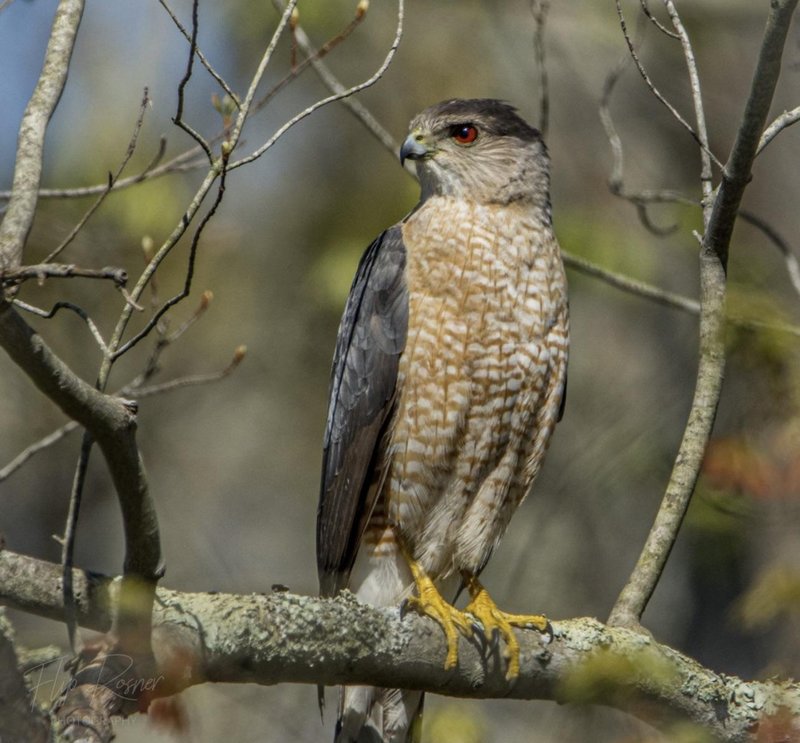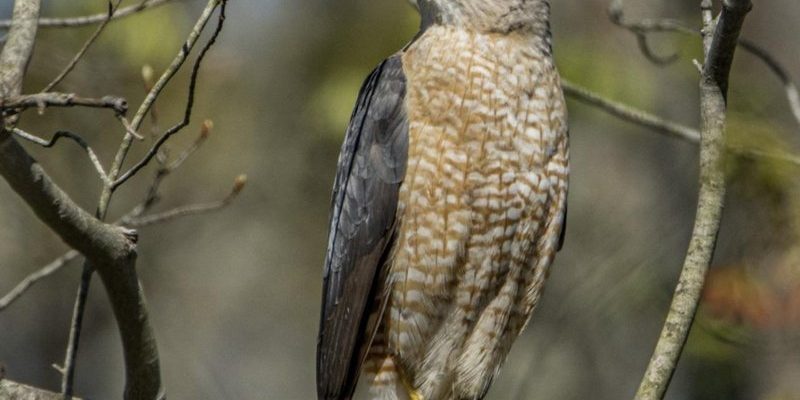
Imagine you’re moving to a new neighborhood. You’d take some time to explore, figure out where the best coffee shops are, and learn the quickest routes to work. Similarly, *Cooper’s Hawks* have honed their abilities over generations to adapt to both their natural habitats and the areas they share with humans. Let’s take a closer look at how these remarkable birds adjust to different environments, their hunting strategies, and the challenges they face along the way.
Physical Characteristics That Aid Survival
The first thing you might notice about *Cooper’s Hawks* is their sleek bodies and sharp features. These physical traits aren’t just for show; they’re essential for their survival. With a wingspan of about 24 to 36 inches, they have the ability to maneuver quickly through trees and dense foliage. This agility enables them to chase after their prey with ease.
Their sharp talons and curved beaks help them catch and eat smaller birds, which make up a large part of their diet. Think of it like a chef using specific knives for different tasks—*Cooper’s Hawks* are equipped for their unique role as predators. Their coloring, often a mix of slate-blue and reddish-brown, helps them blend in with their surroundings, making it easier to stalk prey without being seen.
In addition to physical adaptations, their keen eyesight is crucial. They can spot movement from a great distance, which allows them to locate food even when it’s hiding. Overall, these physical characteristics create a perfect package for life in the wild, proving just how well *Cooper’s Hawks* can adapt to their environments.
The Art of Hunting
Now, let’s dive into how *Cooper’s Hawks* hunt. You might be wondering, “What’s their strategy?” Well, they’re not just swooping down and hoping for the best. These hawks have developed a unique hunting style known as “sit-and-wait.” This means they perch quietly in trees or on power lines, waiting for the perfect moment to strike.
When a potential meal, like a songbird or a squirrel, wanders into their range, they pounce! Their speed is impressive. A *Cooper’s Hawk* can reach speeds of up to 60 miles per hour in a dive. That’s like a car racing down the highway! This speed, combined with their sharp talons, makes them formidable hunters.
Interestingly, their hunting approach can change based on their environment. In urban areas, they might adapt by hunting in parks where smaller birds gather. This flexibility showcases their ability to thrive in various settings. So, whether they’re in a city or out in the wild, *Cooper’s Hawks* know how to adjust their hunting tactics to succeed.
Habitat Preferences and Choices
*Cooper’s Hawks* are quite versatile when it comes to their habitat. They prefer wooded areas but don’t shy away from urban landscapes. This is where their adaptability shines. In forests, they can find plenty of trees to nest in and hunt from. However, in cities, they often take advantage of parks, backyards, and even tall buildings.
You might think that living in a city would make things tougher, but these hawks have found ways to make it work. They can easily navigate through smaller trees and shrubs, using their agility to stay hidden while hunting. Plus, urban environments often mean more food sources, as many people inadvertently attract birds to their yards. So, a *Cooper’s Hawk* might find a feast right in the heart of the city!
The ability to thrive in both rural and urban settings also helps them avoid competition with other birds. When they can find a variety of habitats and food sources, they increase their chances of survival. This knack for choosing the right habitat is a testament to how well these birds adapt to their surroundings.
Challenges and Threats
Despite their incredible abilities, *Cooper’s Hawks* still face numerous challenges. One major threat is habitat loss. As cities expand and forests are cleared, these hawks often have nowhere to go. Urbanization isn’t just about buildings; it impacts their natural food sources, too. With fewer trees, their hunting grounds become limited.
They also face dangers from other predators and cars. Many hawks are hit by vehicles while crossing roads, especially in suburban areas. Honestly, it’s a tough world out there for these majestic birds. Their adaptability is crucial, but it can only go so far against the changing landscapes caused by human activity.
Climate change also poses threats, affecting their migration patterns and food availability. As temperatures rise, some birds may find it difficult to locate suitable nesting sites. Here’s the thing: while *Cooper’s Hawks* have adapted over time, ongoing environmental changes can create new hurdles. This makes conservation efforts all the more essential.
Social Behavior and Breeding Patterns
When it comes to social behavior, *Cooper’s Hawks* are generally solitary, especially during hunting. However, during the breeding season, they become more social. They form strong pair bonds, working together to raise their young. Their nests are typically built high in trees, offering safety from ground predators.
Both parents play an active role in caring for their chicks. During the first weeks of life, they’ll take turns hunting and feeding the young. It’s a beautiful example of teamwork in nature. You might picture them like a couple balancing work and home life, making sure their kids are well taken care of.
Interestingly, the young hawks remain with their parents for several weeks after they fledge, learning vital survival skills. This time spent together helps them adapt to their environment and understand where to find food and shelter. In a way, it’s nature’s version of a “family business.”
*Cooper’s Hawks* are truly remarkable birds that showcase resilience and adaptability. Whether they’re darting through city parks or gliding through vast forests, these hawks have developed the skills necessary to thrive in a variety of environments. Their physical traits, hunting strategies, and social behaviors all contribute to their success.
However, it’s essential that we recognize the challenges they face and support efforts to conserve their habitats. By understanding how *Cooper’s Hawks* adapt, we can appreciate their role in our ecosystems and help ensure they continue to grace our skies for generations to come. So, next time you see one of these incredible birds, take a moment to admire their strength and adaptability in a world that’s always changing.

